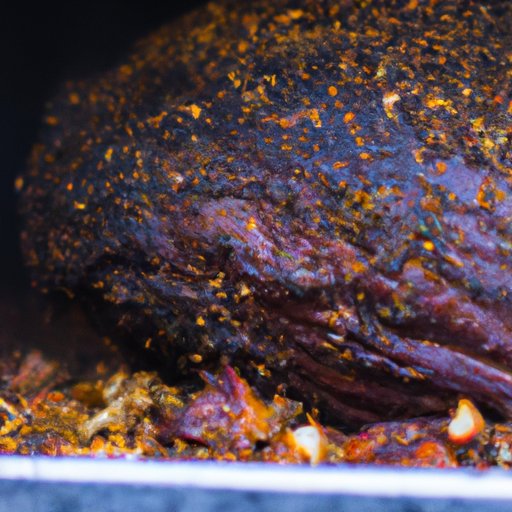The Ultimate Guide to Making Perfect Pulled Pork Every Time
Pulled pork is a beloved dish in barbecue culture. It’s juicy, flavorful, and versatile. You can serve it as a main dish, use it as a filling for sandwiches, or add it to salads for extra protein. Perfect pulled pork requires patience, attention to detail, and the right cooking techniques.
If you want to learn how to make pulled pork like a pro, you’ve come to the right place. This article will provide you with a step-by-step guide to preparing mouth-watering pulled pork every time. We’ll cover the importance of using the right cut of pork, seasoning the meat properly, and ensuring it’s cooked to the correct temperature. We’ll also discuss the different cooking methods for pulled pork and provide instructions for preparing it using each of these methods.
The Importance of Choosing the Right Cut of Pork
The cut of pork you use for pulled pork will greatly impact the final result. The most commonly used cuts are the butt, the picnic roast, and the tenderloin. While all three can be used, the butt and the picnic roast are the preferred options because they are more flavorful and have a better texture.
The butt is a tough, fatty cut from the upper part of the animal. It is well-marbled with fat, which makes it ideal for slow cooking. The picnic roast is a leaner cut from the lower part of the animal. It has a slightly different texture than the butt, but it still turns out tender and tasty when properly cooked.
Seasoning Your Pork
One of the secrets to making great pulled pork is to season it well. You can use a dry rub or a wet marinade to add flavor to your pork. A dry rub is a mixture of herbs, spices, and salt that is rubbed onto the meat. A wet marinade is a mixture of liquid (such as apple cider vinegar or beer) and seasonings that is used to soak the meat before cooking.
If you’re using a dry rub, make sure to coat the entire surface of the pork with the seasoning and let it sit for at least an hour before cooking. If you’re using a wet marinade, let the pork soak in the marinade for at least four hours (or overnight) before cooking.
Cooking Methods for Pulled Pork
There are several ways to cook pulled pork, each with its own unique benefits. The three most popular methods are smoking, slow cooking, and oven roasting.
Smoking Pulled Pork
Smoking is the traditional method for making pulled pork. It requires a smoker, which is a specialized outdoor cooking appliance that uses wood chips or pellets to add a smoky flavor to the meat.
To smoke pulled pork, you’ll need to prepare your smoker by adding wood chips to the firebox. Once the smoker reaches the desired temperature (225-250°F), place the pork on the cooking grate. Close the lid and allow the pork to smoke for six to eight hours (or until it reaches an internal temperature of 195-200°F).
If you’re new to smoking, it’s recommended that you use a digital thermometer to monitor the meat’s temperature and a water pan to keep the pork moist.
Slow Cooking Pulled Pork
Slow cooking is an excellent option for those without a smoker or who prefer to cook indoors. It requires a slow cooker or a large pot with a lid.
To prepare pulled pork in a slow cooker, place the seasoned pork into the pot and add enough liquid to cover it. This liquid can be water, broth, or even soda. Cook the pork on low for eight to ten hours (or until the internal temperature reaches 195-200°F).
One of the benefits of slow cooking is that you can set it and forget it. It’s also more forgiving than smoking, as you won’t have to worry about maintaining a constant temperature or adding more wood chips.
Oven Roasting Pulled Pork
Oven roasting is another option for those without access to a smoker. It requires an oven and a large baking dish with a lid.
To roast pulled pork in the oven, preheat your oven to 325°F. Place the seasoned pork into the baking dish and cover it with the lid. Cook for four to six hours (or until the internal temperature reaches 195-200°F).
One of the benefits of oven roasting is that you can add vegetables (such as onions, carrots, and potatoes) to the dish to create a one-pot meal.
Conclusion
Preparing perfect pulled pork requires the right cut of pork, proper seasoning, and the knowledge of the best cooking methods. Whether you prefer smoking, slow cooking, or oven roasting, one thing is certain – when done right, pulled pork is a crowd-pleaser that never fails to satisfy.
So, go ahead and try one of these methods for yourself. Your taste buds will thank you.
